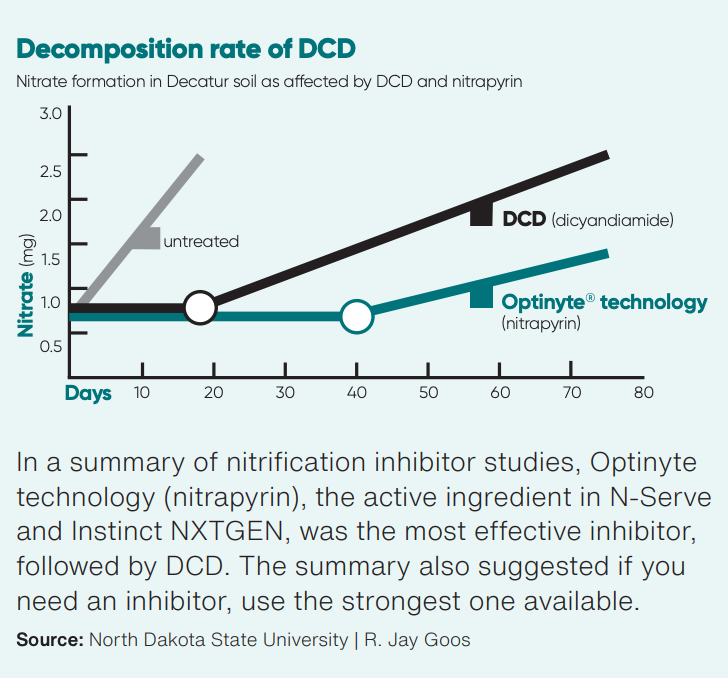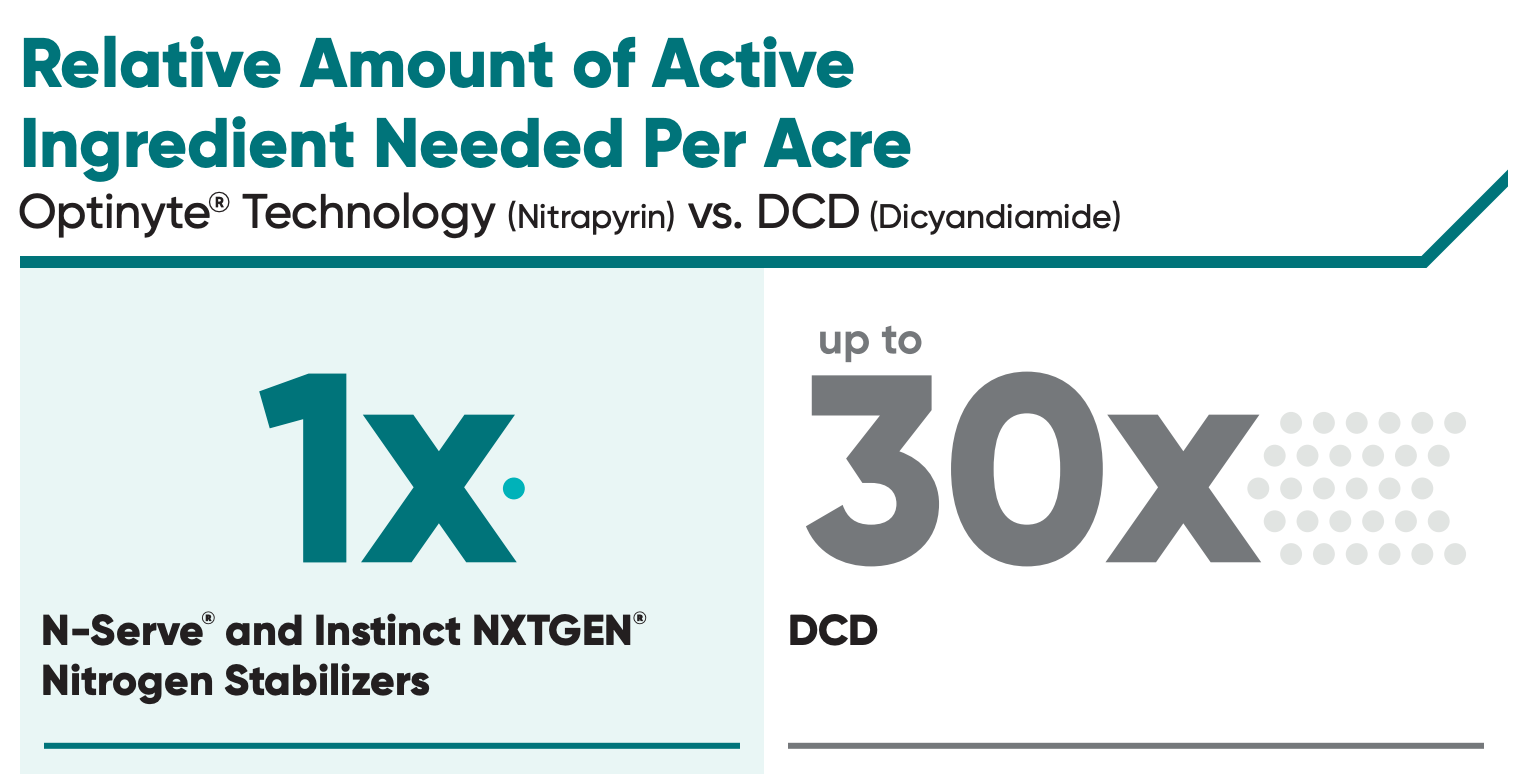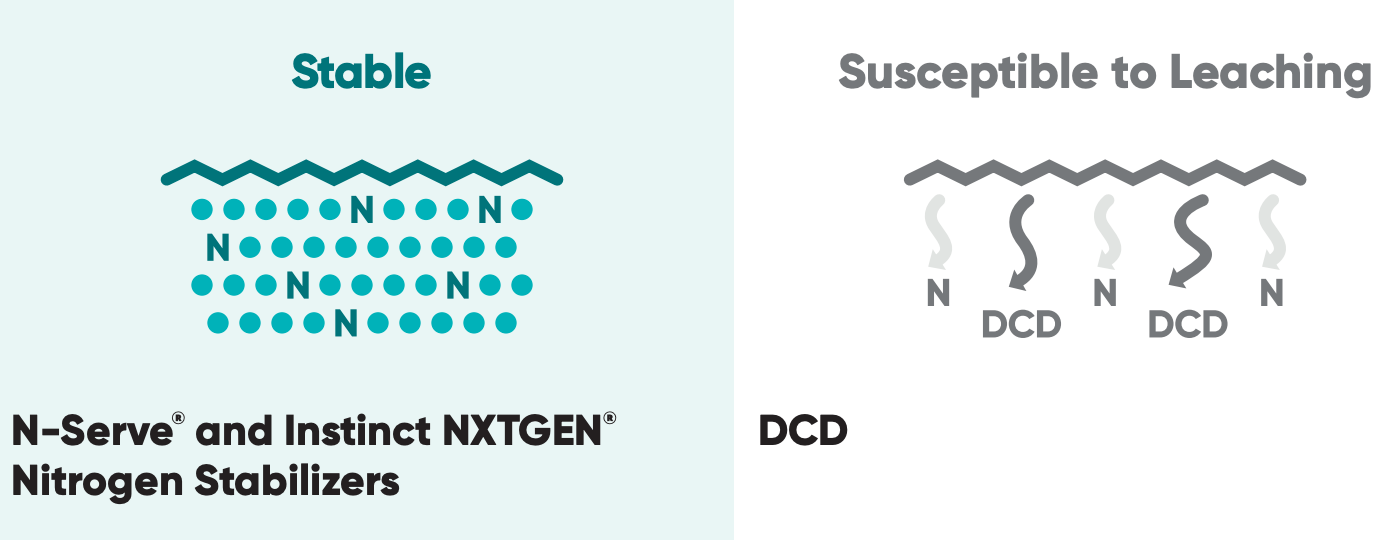“Nitrogen stabilizers maximize fertilizer investments by keeping nitrogen in the ammonium form — which is not prone to losses from leaching and denitrification,” said Chris Kluemke, Nutrient Maximizer development specialist, Corteva Agriscience. “However, not all nitrogen stabilizers on the market are created equal.”
Need proof? N-Serve® and Instinct NXTGEN® nitrogen stabilizers are powered by Optinyte® technology. Here are five ways Optinyte technology (nitrapyrin) is superior to products containing DCD (dicyandiamide) when it comes to preventing nitrogen loss.
- Impact on Yield
The use of Optinyte technology in multiple peer-reviewed studies and field locations showed a 7% yield increase when used with fall-applied nitrogen and 5.2% yield increase when used with spring applications.1
NutrientStar, a science-based review program for nutrient management, states the following:
- DCD did not have any beneficial yield impacts to either wheat or corn.
- Given its demonstrated ability to increase crop yield while simultaneously decreasing fertilizer nitrogen needs as well as damaging nitrogen losses to the air and water, nitrapyrin promises to be an important component of improved management practices.
- Length of Control
Consider the length of control offered by the nitrogen stabilizer when deciding between products.
“A corn crop will need to take up nitrogen well into August,” Kluemke said. “Nitrogen needs to be protected if you want to have the nutrient left in the soil when the crop is trying to finish filling the ear. Optinyte technology provides six to eight weeks of control, while DCD offers only one to two weeks.”

- Amount of Active Ingredient
Optinyte technology is quite effective even at relatively low use rates, while DCD is required at a significantly higher concentration to be effective.

- Soil Stability
DCD is water-soluble and can leach away with the first significant rainfall event in contrast to Instinct NXTGEN and N-Serve, which remain in the root zone protecting your nitrogen from losses. Optinyte technology has proven to reduce nitrogen leaching by 16% and increase soil retention by 28% on average.1

- Environmental Impact
In 2016, the U.S. Environmental Protection Agency awarded Optinyte technology the Presidential Green Chemistry Challenge Award, stating the technology added about 50 million bushels of additional corn, which equated to over $205 million in additional production revenue for U.S. corn growers, and reduced carbon dioxide emissions by about 664,000 metric tons.
“Results showed that, on average, greenhouse gas emissions decreased by 51%,” Kluemke said.
Need more data on Optinyte vs. DCD? Reach out to your local retailer or visit NutrientMaximizers.com.
1Wolt, J. D. 2004. A meta-evaluation of nitrapyrin agronomic and environmental effectiveness with emphasis on corn production in the Midwestern USA. Nutrient Cycling in Agroecosystems. 69: 23–41.
Instinct NXTGEN® is not registered for sale or use in all states. Contact your state pesticide regulatory agency to determine if a product is registered for sale or use in your state. Do not fall-apply anhydrous ammonia south of Highway 16 in the state of Illinois. Optinyte® is a registered active ingredient. Always read and follow label directions.

